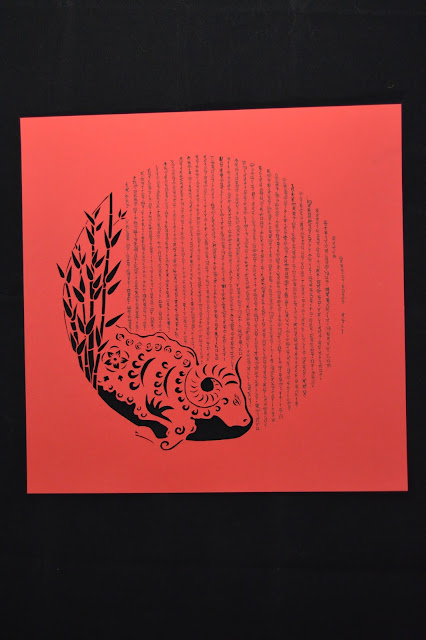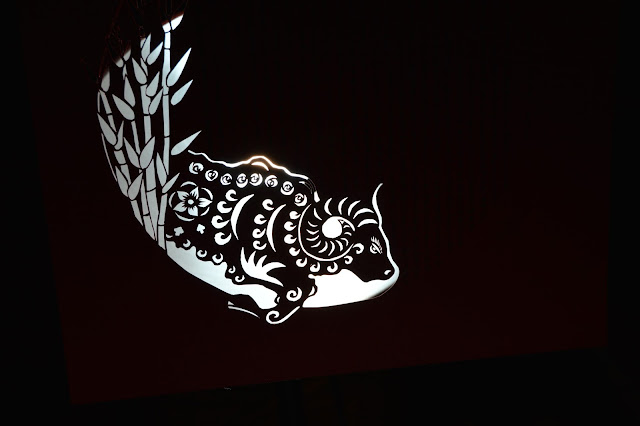-Until the 4th century when Romanization took over, masks were primarily used in religious ceremonies. Eventually they became more secular and then disappeared for a time before returning in a more social setting.
-Around 1530 we can see Commedia coming into the scene. The characters never defined Commedia; Commedia chose the characters.
-Different dialects are seen with different charaters. Dottore usually has a Bolognese dialect as he is from Bologna where the first university can be seen as well as a gastonomic capital. Pantalone, which stands for Plant a Lion (the symbol of Venice), speaks Venetian. In fact, all versions of the Pantalone character come from various different port cities, heavy in trade: Pancrazzio, Magnifico, Stefanello. The lovers spoke the language of Florence as it was the most common, plus had the most Latin and was mostly used for writing. Southern servents spoke Neopolitan and the Northern servents spoke Bergamesk.
-Commedia started in Italian and then went to Spanish, French, German, and then English.
-All Characters are part of the audience. In that sense, all the audience is part of the play. There is no fourth wall.
-Pulcinella stands for chicken, but not chicken like the animal, but more of a bird brain or a rube. In Italian, people will say they will trick that 'pollo' over there, for example.
-You need a zanni 1 (smarter/cleverer) and a zanni 2 (more foolish/stupid) for a play. They are the an integral part of the machine that is Commedia.
-Follow the rules of the mask at all times. If you wear a mask of that character, you are that character. Respect the mask. When it is on, talk and act in character.
-There are six pillars of Commedia: Masks (on principle), Improv (to react with your partner, to know how to react on stage), Engage the Audience, Multilingual (as long as one person in the troupe is understood by each member of the audience, and it can be a different member for each person, you don't need everyone speaking the same language. Commedia is PHYSICAL not VERBAL), Fixed parts (the mask is the character), and the audience must be happy!
-You have to know 1/2 of the character and 1/2 of yourself to have the definitive to improvise.
-Commedia is based on a binary system. You should always be working in pairs.
-The finale of each act should be all actors and big confusion until the finale of the last act, which should be all characters and happy.
-It is not uncommon for the play to end with Dottore coming out and apologizing for the play not being on the same level as such a beautiful audience. Always leave the audience happy!
-The audience can see the creation of a mistake and will follow it to the inevitable conclusion. The goal of the players is to be more creative than the audience so they can make the mistake do things that the audience couldn't have imagined... and then resolve it.
-All scenarios almost exactly the same for the past 2 centuries: not written words but more focused on the physical comedy.
-Everyone in commedia is a protagonist. There is no good and evil. Cruelty and cynisism is not synonymous with evil.
-Typical commedia would be three hours long with 2 intermissions, making the full show time about 4 hours. There would be a tremendous amount of props, sets, and costumes.
-Commedia started on the street because it was an invention of a new type of entertainment and they had to invent and figure out the audience they needed. It could not stay there, though, because 5 minute skits, (which were all someone was allowed) would just confuse an audience.
-In 1560 we see women in public in theater and it was a big success. Immediately we see the professional term for an actress seen in writing.
-Use the language of the country. Italy has over 300 dialects of Italian. Use them all. Some will understand you, some wont, and that's okay. Your body should be telling the comedy.
-Isabella Andrini was a poet and playwright. She invented how to speak in love, upside down, term: mad for love.
-Each actor invents their own names.
-1st Zanni examples: Brighella, Finnocchio.
-2nd Zanni examples: (there are OVER 300 of these names) Alecchino (who is NOT separated from the rest), Pulchinella (who is a survivor of political change in creation and is the only zanni who is typically married to Dona Setza and has lots of children).
-Your mask is your face. It is not a mask. You do not touch, readjust, move your face. That is creepy. Do not speak normally in your mask. When you put it on, you are that person. Follow the rules of the mask.
-An actor is a worker making a mask do what it needs to.
-Social masks were invented to hide people, for secret rendevous. It was the same as if saying 'should I wear a hat today or not'.
-Ancient greek/roman theaters were open. Audience and their reactions were part of the show.
-Lights out theater did not start until Wagner. At that point, the audience was no longer a part of the show. They were simply there to watch the actors.
-Canovaccho is a more elastic term for a single scene as opposed to scenario which refers to the whole play.
Zanni stance and characterization:
-Your head is independent of your body and moves in a camera point and click action. Otherwise, with a mask on, you just look drunk. So small short movements. Your sight follows where your nose is pointed.
-Lead with your sternum. Push it out to accentuate spine curvature. The sternum represents the person. Your body moves in whichever direction your sternum is pointed in.
-Keep your elbows bent and your hands rounded.
-Pop out your butt to, again, accentuate spine curvature.
-Knees bent.
-Feet at oblique angle and kept close together.
-When moving, your arms and legs move opposite directions like a marionette.
-All masked characters follow the point and click so they don't look drunk.
-Actions happen in an upsidedown pyramid shape. You should act like you are floating, barely touching the ground. Take small steps but big movements to take them.
-Kick steps: always land with feet flat or lead with toe. Don't put down heel and stick toes in air.
-Grand Zanni walk - arch back inward and bend down slightly. Slow steps, big arms, high legs. Over accentuated creeping walk.
-Engage audience!! They are part of the cast!
-Masks hold no magic. They are a science and an art. Bad religious mask is still good because it holds magic. Bad commedia mask has no art and hence is a bad character.
-Too finished = naieve/obvious. Do not 'demonstrate' the character.
-Sprizatura = natural and being absolute in a natural way.
-Psychology is not inside the character. Everything is shown on the outside visibly. All wants/fears/etc are shown, visible, outside.
-Commedia is like jazz. Two people at the same time make a cacophony, but the harmony will come.
-When you have a fixed point (ie, two people grab the same thing or each other) all action happens around that point and the point stays as still as possible or the action will feel dirty.
-Disguises go around the character. Do not mask a masked character. Always have part of the character showing so we know who is disguised.
-Feet should -never- make a sound. It distracts the audience.
-La Servetta is LIKE a 1st Zanni. She has no mask. Beautiful. Columbina (dove), Olivetta (named after food), Rosetta (named after flowers), Emeretta (named after precious stones). They are always the first to recognize the imposter or plot.
-Can not couple two 1st zanni because both will want to be the leader. Always love between a 1st and 2nd.
-1st Zanni try to sound clever
-Try to create liberation of disasters. Example: Zanni is upset because he lost his love. So he decides he will try to kill himself and tries to punch himself, but that hurts. He tries to hold his breath, but that doesn't work. Tries to eat himself, but that doesn't work... etc.
-2nd Zanni can not lie
-Masks are not to be made on the actors face or with the mold of an actor. Then the mask will look like the actor.
-Never play as a parody of something else. Each character is serious in their life.
-Play emotions over the top, but you can interrupt for a serious moment. AKA Crying Zanni that can't be understand by audience called by his master. Turns and says 'in a minute' before returning to crying to the audience.
-Ignorance should be dynamic.
-Props are given the same dignity and respect artistically as the actors.
Themes of Commedia:
-Love
-War
-Hunger
-Poverty
-Money
-Richness
-Every character should have their breaking point. Examples: If I don't eat, I will die (Zanni). If I don't marry, I will die (lovers). If I am not seen as knowing all the history of humanity, I will die of shame (Dottore).
-Commedia is the poetry about surviving everyday life
We did two Canovacchio today.
The first was two Zanni, both of them having something that they found/were given/bought/etc. Each one searches their pockets and can't find it.
The other was playing as the Zanni of three different masters all searching Pantalone's basement, in the dark, to find a document (which they may not know what is) and none of them know the others are there.
























